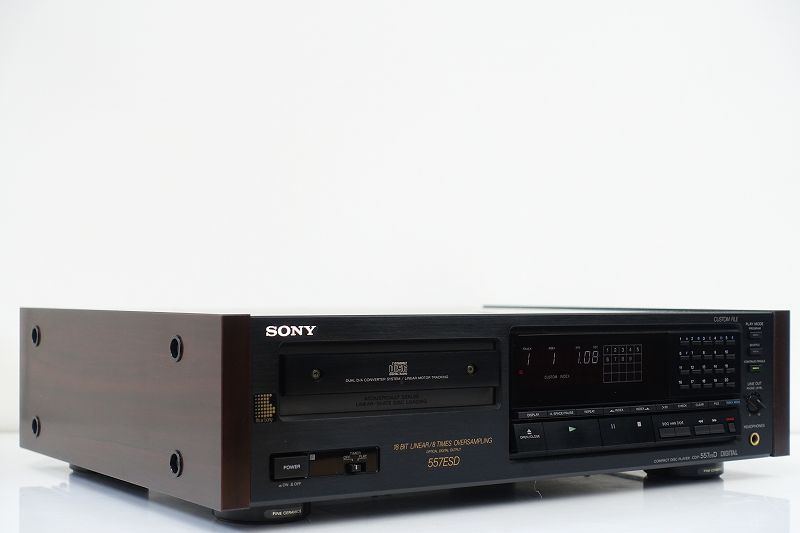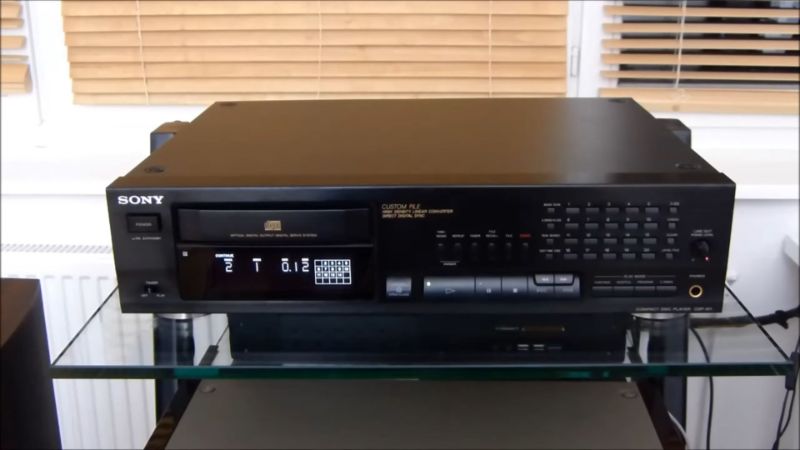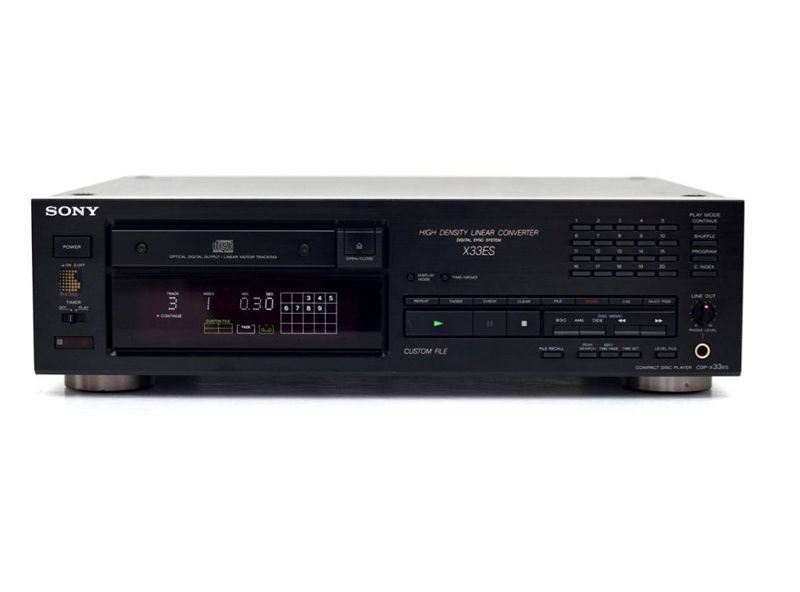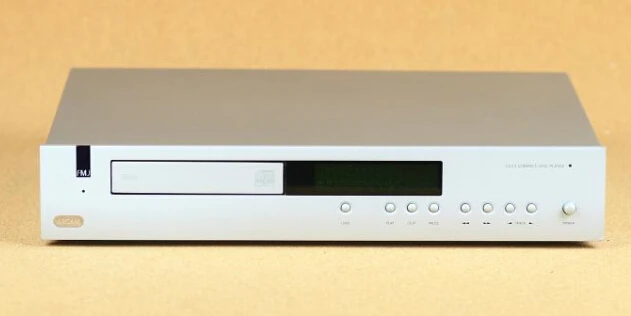Paul Miller, pointing out the complexity in the low-end CD market, demonstrated how pandemonium prevails when too many manufacturers compete for the same budget dollars. In his January issue review, he assessed Marantz’s latest entrance at the £200 pricing point, highlighting the dangers of rushing to market and issuing a run with shoddy parts. Which, according to Paul, Marantz was able to catch.
Thankfully, my irritated colleague was unaware that Marantz was working on a giant-killer that was only £100 more expensive than the MKII. As PM mentioned, the CD-52 MKII he tested had most of the SE adjustments of the CD-52 (MKI) in a conventional, non-SE model.
What would he do if a SE version of the CD-52 MKII arrived (too soon)? The extra £100 will be used to add gold script to the front panel and make a few minor internal adjustments. Because of their incompatibility with automatic component insertion machines, several of the original (MKI) CD-52 SE part alterations are not included in the ordinary, non-SE CD-52 MKII; nonetheless, they are ingredients in the CD-52 MKII SE formula.
The basic transformer has been replaced with a better version that employs oxygen-free copper for the primary and secondary windings, and silicon plates (mu-metal) in the transformer core to raise the saturation level from H8 to H13. The output op amps are fed by two Cerafine power supply capacitors, which were altered from NE5532Ns to NJM2114Ds for the original ’52 SE and then utilized in the regular ’52 MKII. These provide better capacitor matching after the rectifier and before the regulator, as well as DC decoupling caps for a clean supply to the analogue circuits. Better bass extension and tightness are believed to be among the sonic benefits.
Back-to-back insertion of the four Silmic coupling capacitors is supposed to add more resolution for a cleaner, more detailed sound. The Silmics have since been installed in place of the Elna devices on regular ’52 MKIIs, according to PM.
Aside from the gold label, this is the identical unit as the standard 52 MKII, a model that betrays its price tag due to its flimsy case; it could say Airfix or Revell and no one would blink. But this infant belongs to the school that preaches, “It’s what’s on the inside that counts.” A more durable case or some restyling would have pushed this out of the budget-audiophile category and into the mid-market, where Marantz currently sells devices.
A full-function remote, a tell-all LCD panel, respectable mechanical operation, and modest style aside, it’s amazingly well-equipped. It could hold its own on the dealer’s shelf even if it didn’t perform above average. But first, let me give you two quotes to give you an idea of how unique it is. The first is from a hi-fi manufacturer who came by but asked to stay anonymous. ‘I prefer the vocals on the Marantz,’ he stated after I A/B’d the Marantz against a good £7000 worth of high-end gadgets and machines for him.
Which is less expensive than the coax I was using to connect the DAC to the transport. The other remark comes from Ken Ishiwata of Marantz, who, as everyone knows, is a person who never wastes words. You pay attention to what he says. ‘At long last, here’s a product of which I’m actually proud,’ he added, and I repeat him literally. Remember, this is coming from someone who has worked on some of the best CD players in the last six years, as well as the Marantz Music Link amplifiers, which I believe will be considered classics in a few years.
In any case, I slid the ’52 MKII SE into a system that costs around £40,000. I was anticipating a laugh. At the very least, smile. Instead, I took a seat. Dumbstruck. I’ve never heard a normal CD-52 MKII, and Paul’s review didn’t exactly make me want to break down the door of the local Marantz dealer or send a bike messenger to Middlesex. If it’s as good-but-not-great as Paul claims, the minor modifications required are similar to what Carroll Shelby accomplished to the basic AC Ace.
He transformed it into the Cobra, a hairy creature. The CD-52 NKII SE is equally as harmful as the CD-52 NKII SE. Why? Because it delivers performance much beyond its price tag, any audiophile willing to overlook its weak build quality is bound to buy it. Or, to be more precise, to any audiophile who isn’t concerned with the label on the fascia. But, before you cancel your Wadia order, consider what it can’t accomplish. (That is, in sonic terms.) Expect to pay more than £299 for a CD player that looks like it costs £5000 and is built like a Mercedes.)
To begin with, there’s a small haze, a lack of clarity that prevents it from being mistaken for a Krell or a Theta. I was able to analyze the contribution of the CD-52 MKII SE’s transport away from the DAC and output sections because it featured digital output; it was not the primary cause of the haze, despite being immediately distinct from the Krell MD-20 transport as being less transparent. The frequency extremes, on the other hand, are not as well defined as they are with state-of-the-art players. The bass isn’t as rich or as firm, but we’re talking about incredibly low frequencies; given that this is likely to be utilized in systems with smaller-than-Diva speakers, I doubt most potential buyers of a 1952 MKII SE will notice.
Regardless of speaker type, the treble appeared slightly less authoritative than the Krell/Vimak or Krell/Krell pairs. That’s all there is to it. These flaws are so minor that pointing them out borders on the sadistic. Instead, consider the Marantz’s advantages. Like a tube amp or an LS3/5A, the midband is positively luscious: rich, flowing, and warm. The soundstage is large and realistic, with a small recession in the center that suggests deeper front-to-back dimensions, which is a plus if your system lacks this feature. Because the sound isn’t in your face, it lacks ferocity, which is normally the curse of inexpensive gear claiming to be something it isn’t.
Given the minor flaws at the frequency extremes, it’s refreshing to hear that everything from the lower/mid bass to the treble’s middle ranges is consistent, smooth, and coherent. It conjures up images of amazing mini-monitors like the LS3/5A, Dynaco 35W/channel tube amps, AR turntables, basic Denon m-c cartridges, entry-level Sennheisers, and the Audio Alchemy DAC, among other components. And its performance is so pleasant, the little zits hidden by a psychologically administered dab of Clearasil, that you can get away with it when you’re not using it for its intended purpose.
In other words, I’ve been using it for a week and haven’t experienced any withdrawal symptoms. Which brings me to an announcement: as of early 1993, the CD-52 MKII SE may be the best digital hardware bargain available. While it isn’t a match for the high-end aristocrats — especially if customers want/need more than just sound quality — it is decent enough to serve as a source for any audiophile on a budget, without ever alerting the listener (via the ears) that he or she has bought something so cheap.
Add a pair of Mission 760is, Celestion Ones, or Tannoy 603s, and you’ve got a system for about £900 (or a thou if you add some nice cables and supports) that will never let you down in any area under 4x5m square. And anyone who sneezes at the sound is a jerk who prefers hi-fi over music.







